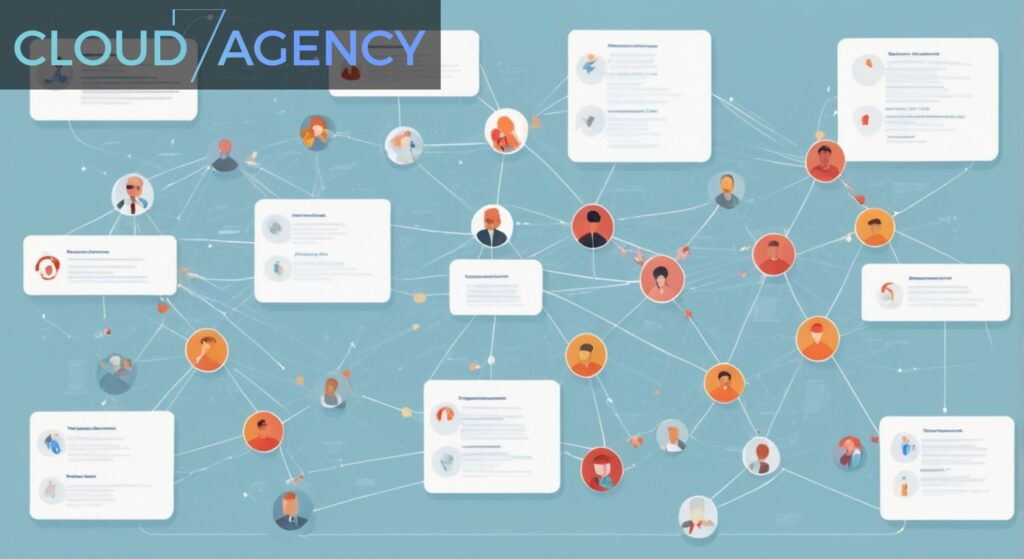In today’s competitive digital landscape, businesses operating multiple locations or managing various brands face the complex challenge of maintaining consistent online presence across numerous Google Business Profiles. Whether you’re a franchise owner with dozens of locations, a digital marketing agency handling multiple clients, or a multi-location enterprise, effective profile management has become a critical component of local SEO success and customer acquisition strategies.
The proliferation of local search queries has made Google Business Profiles more important than ever before. Statistics show that 46% of all Google searches have local intent, and businesses with optimized profiles are 2.7 times more likely to be considered reputable by consumers according to Google’s local search data. However, managing multiple profiles presents unique challenges that can overwhelm even experienced marketing professionals. From ensuring consistent NAP (Name, Address, Phone) information across all listings to responding to customer reviews promptly and maintaining accurate business hours during seasonal changes, the complexity multiplies exponentially with each additional profile.
The stakes are particularly high when considering that inconsistent or outdated information across multiple profiles can severely impact local search rankings and customer trust. Google’s algorithm favors businesses that demonstrate reliability and accuracy in their profile management, making systematic approaches to multi-profile oversight essential for maintaining competitive advantage. Furthermore, the time investment required for manual management of numerous profiles often diverts valuable resources from other strategic marketing initiatives.
Modern profile management extends beyond basic information updates to encompass sophisticated strategies including review management, post scheduling, photo optimization, and performance analytics across all locations. The most successful businesses have recognized that scaling their Google Business Profile management requires a combination of strategic planning, technological solutions, and standardized processes that can maintain quality while reducing manual workload.
Key Takeaways
Centralized Management Systems: Implementing comprehensive profile management platforms enables efficient oversight of multiple Google Business Profiles from a single dashboard, reducing time investment and minimizing errors across all locations.
Standardization Protocols: Developing consistent templates and guidelines for business information, posting schedules, and response procedures ensures brand uniformity while maintaining local relevance across all profiles.
Automated Monitoring: Setting up automated alerts and monitoring systems helps identify profile changes, review submissions, and ranking fluctuations in real-time, enabling rapid response to issues that could impact local search performance.
Performance Analytics Integration: Leveraging comprehensive analytics across all profiles provides valuable insights into customer behavior patterns, seasonal trends, and optimization opportunities that inform strategic decision-making.
Review Management Workflows: Establishing systematic approaches to review monitoring and response ensures consistent customer service standards while protecting brand reputation across all locations.
Content Distribution Strategies: Creating scalable content creation and distribution processes allows for regular posting across multiple profiles while maintaining relevance to local audiences and seasonal considerations.
Compliance and Accuracy Maintenance: Regular auditing procedures and verification processes prevent information discrepancies that could negatively impact local search rankings and customer experience.
Understanding Multi-Profile Management Complexity
Managing multiple Google Business Profiles at scale involves navigating a complex ecosystem of interconnected factors that can significantly impact overall marketing performance. The fundamental challenge lies in maintaining consistency while accommodating the unique characteristics and requirements of each individual location or brand. This complexity is further amplified by Google’s frequent algorithm updates and policy changes that affect how profiles are displayed and ranked in local search results.

The technical infrastructure required for effective multi-profile management extends beyond simple spreadsheet tracking to encompass sophisticated data management systems capable of handling large volumes of information while maintaining accuracy and accessibility. Organizations must consider factors such as user permissions, data security, integration capabilities with existing marketing tools, and scalability to accommodate future growth through enterprise technical management. The most successful implementations involve careful evaluation of available technologies and selection of platforms that can grow with organizational needs.
Geographic considerations add another layer of complexity, particularly for businesses operating across multiple time zones, markets with different cultural preferences, or regions with varying regulatory requirements. Profile management strategies must account for local holidays, seasonal business patterns, and regional customer behavior while maintaining overall brand consistency through multi-location SEO. This requires sophisticated planning and execution capabilities that can adapt to local conditions without compromising corporate standards.
The human resource implications of multi-profile management are equally significant, as organizations must determine optimal staffing models that balance efficiency with quality control. Some businesses opt for centralized management teams, while others prefer distributed approaches with local representatives handling specific profiles. The choice depends on factors such as organizational structure, budget constraints, and the level of local customization required for effective market penetration.
Essential Tools and Technologies for Scale Management
The foundation of successful multi-profile management rests on selecting and implementing appropriate technological solutions that can handle the complexity and volume requirements of large-scale operations. Modern profile management platforms offer comprehensive dashboards that consolidate multiple Google Business Profiles into unified interfaces, enabling marketing teams to monitor performance, update information, and respond to customer interactions without switching between numerous individual accounts.
Advanced management platforms provide sophisticated features including bulk editing capabilities, automated posting schedules, and real-time synchronization with Google’s systems according to Google’s Business Profile API documentation. These tools often include template systems that allow for consistent messaging while maintaining the flexibility to customize content for specific locations or market segments. Integration capabilities with existing CRM systems, social media management tools, and analytics platforms create comprehensive marketing ecosystems that streamline workflows and improve data accessibility.
API-based solutions offer the highest level of customization and control, particularly for organizations with unique requirements or existing technology infrastructures. These implementations enable direct integration with proprietary systems and allow for custom workflow development that aligns with specific business processes through local SEO automation. However, API solutions typically require more technical expertise and ongoing maintenance compared to turnkey platform solutions.
Monitoring and alerting systems represent critical components of scalable profile management, providing automated notifications when profiles experience changes, receive new reviews, or encounter technical issues. These systems enable rapid response to problems that could impact search rankings or customer experience, while also identifying opportunities for optimization and improvement through performance monitoring. Advanced monitoring solutions can track competitor activities, market trends, and algorithm changes that affect local search performance.
Data backup and recovery systems ensure that profile information and historical data remain protected against accidental deletions, system failures, or policy violations that could result in profile suspensions. Regular backup procedures and documented recovery processes minimize the risk of losing valuable profile history and customer interactions that contribute to long-term search performance and reputation management.
Standardization and Workflow Development
Creating standardized processes and workflows forms the backbone of efficient multi-profile management, ensuring consistent quality while reducing the time and effort required for routine maintenance tasks. Effective standardization begins with developing comprehensive style guides and templates that define how business information should be formatted, what types of content are appropriate for different locations, and how customer interactions should be handled across all profiles.
Documentation of standard operating procedures provides clear guidelines for team members responsible for profile management, reducing training time and minimizing errors that could impact search performance or brand consistency. These procedures should cover everything from initial profile setup and verification processes to ongoing maintenance schedules and emergency response protocols. Regular updates to documentation ensure that procedures remain current with Google’s evolving policies and best practices.
Content creation workflows must balance efficiency with local relevance, often involving centralized content development teams that create template materials which can be customized for specific locations or market segments through dynamic local content. This approach ensures brand consistency while allowing for local adaptation that resonates with regional audiences. Approval processes and quality control measures prevent inappropriate or inaccurate content from being published while maintaining reasonable turnaround times for content distribution.
Review response protocols establish consistent standards for customer service while allowing for personalization that reflects local management styles and customer expectations through review management strategies. These protocols should include response time targets, escalation procedures for negative reviews, and templates for common situations while maintaining flexibility for unique circumstances. Training programs ensure that all team members understand these protocols and can implement them effectively.
Performance monitoring workflows define regular review cycles for analyzing profile performance, identifying optimization opportunities, and implementing improvements across multiple locations. These workflows should include specific metrics to track, reporting schedules, and decision-making processes for implementing changes through comprehensive analytics. Regular performance reviews enable continuous improvement and help identify successful strategies that can be scaled across additional profiles.
Advanced Analytics and Performance Optimization
Sophisticated analytics implementation enables data-driven decision making that optimizes performance across multiple Google Business Profiles while identifying trends and opportunities that might not be apparent when managing profiles individually. Comprehensive analytics platforms aggregate data from all profiles to provide insights into customer behavior patterns, seasonal trends, and the effectiveness of various optimization strategies across different locations and market segments.

Key performance indicators (KPIs) for multi-profile management extend beyond basic metrics like views and clicks to encompass more sophisticated measures such as conversion rates, customer acquisition costs, and lifetime value calculations that demonstrate the true impact of profile optimization efforts. Advanced analytics can identify correlations between profile activities and business outcomes, enabling more strategic resource allocation and optimization prioritization through predictive analytics.
Competitive analysis capabilities allow businesses to benchmark their performance against local competitors across multiple markets simultaneously, identifying strengths and weaknesses in their profile management strategies through competitive intelligence. This analysis can reveal opportunities for differentiation and help prioritize optimization efforts in markets where competitive advantages are most achievable. Regular competitive monitoring also helps identify emerging trends and best practices that can be adapted for improved performance.
Predictive analytics and machine learning applications can identify patterns in customer behavior and search trends that inform proactive optimization strategies. These advanced capabilities enable businesses to anticipate seasonal fluctuations, identify emerging market opportunities, and optimize their profile management strategies before competitors recognize the same trends through AI-powered insights. Implementation of predictive analytics requires sophisticated data collection and analysis capabilities but can provide significant competitive advantages.
Custom reporting systems tailored to specific organizational needs ensure that stakeholders receive relevant information in formats that support their decision-making processes. These reports might include executive summaries for senior management, detailed performance analyses for marketing teams, and operational metrics for location managers. Automated reporting reduces manual effort while ensuring consistent information distribution across the organization.
Risk Management and Compliance Strategies
Effective risk management for multi-profile operations requires comprehensive understanding of Google’s policies and guidelines, as violations can result in profile suspensions that significantly impact local search visibility and customer acquisition. Organizations managing multiple profiles face amplified risks, as policy violations on one profile can sometimes affect other profiles associated with the same business or management account. Developing robust compliance strategies protects against these risks while ensuring sustainable long-term performance.
Regular audit procedures should systematically review all profiles for compliance with current Google Business Profile guidelines, accuracy of business information, and adherence to internal quality standards. These audits should be conducted on predetermined schedules and whenever Google announces policy changes or algorithm updates through local SEO audits. Documentation of audit findings and corrective actions provides valuable historical data and helps identify recurring issues that require systematic solutions.
Backup and recovery procedures ensure that profile data and historical information remain protected against accidental deletions, system failures, or account suspensions. Regular data exports and secure storage of profile information enable rapid recovery in case of problems, while documented procedures ensure that team members can implement recovery processes quickly and effectively. These procedures should be tested regularly to verify their effectiveness and updated as necessary.
Access control and security measures protect against unauthorized changes to profiles while ensuring that appropriate team members can perform their responsibilities efficiently. Multi-level permission systems allow for granular control over who can make different types of changes, while audit trails provide accountability and help identify the source of any problems that occur. Regular review of access permissions ensures that former employees or contractors cannot make unauthorized changes to profiles.
Crisis management protocols define procedures for responding to significant problems such as negative publicity, review bombing, or policy violations that affect multiple profiles simultaneously through reputation management. These protocols should include communication plans, escalation procedures, and predetermined response strategies that can be implemented quickly to minimize damage to brand reputation and search performance. Regular training and simulation exercises help ensure that team members can implement these protocols effectively under pressure.
At C7A, we understand the complexities involved in managing multiple Google Business Profiles at scale and provide comprehensive solutions that address the technical, operational, and strategic challenges faced by multi-location businesses and marketing agencies. Our expertise in profile management enables organizations to maintain consistent online presence while optimizing performance across all locations and market segments.
Frequently Asked Questions
What is the most efficient way to manage multiple Google Business Profiles simultaneously?
The most efficient approach involves using specialized profile management platforms that provide centralized dashboards for monitoring and updating multiple profiles. These platforms typically offer bulk editing capabilities, automated posting features, and real-time synchronization with Google’s systems through local SEO automation, significantly reducing the time required for routine maintenance tasks.
How can I ensure consistent information across all my business profiles?
Implementing standardized templates and regular audit procedures helps maintain consistency across multiple profiles. Use centralized data management systems that can push updates to all relevant profiles simultaneously through citation management, and establish regular review cycles to verify that information remains accurate and consistent across all locations.
What are the biggest risks when managing multiple Google Business Profiles?
The primary risks include policy violations that could result in profile suspensions, inconsistent information that damages local search rankings, and inadequate review management that affects brand reputation. Implementing comprehensive compliance monitoring and standardized procedures through GMB best practices helps mitigate these risks effectively.
How do I handle reviews across multiple locations efficiently?
Establish centralized review monitoring systems that aggregate reviews from all profiles and provide automated alerts for new submissions. Develop standardized response templates while maintaining flexibility for personalization through review management workflows, and implement escalation procedures for negative reviews that require management attention.
What metrics should I track for multi-profile performance analysis?
Focus on metrics that demonstrate business impact, including profile views, customer actions (calls, directions, website visits), review ratings and volume, search ranking positions for key terms, and conversion rates through comprehensive metrics tracking. Aggregate these metrics across all profiles to identify trends and optimization opportunities.
How can I scale content creation for multiple business profiles?
Develop template-based content creation systems that allow for local customization while maintaining brand consistency through content scaling strategies. Use centralized content calendars and automated distribution systems to ensure regular posting across all profiles, and consider seasonal and local event calendars for relevant content timing.
What should I do if one of my Google Business Profiles gets suspended?
Immediately review Google’s suspension notification for specific policy violations, document all profile information and recent changes, and begin the reinstatement process through Google’s official channels. Having backup data and documented compliance procedures through GMB suspension recovery significantly speeds the recovery process.
How often should I audit my multiple Google Business Profiles?
Conduct comprehensive audits at least quarterly, with monthly reviews of critical information such as business hours, contact information, and recent reviews through local SEO audits. Implement automated monitoring for real-time alerts about significant changes or issues that require immediate attention.
Conclusion
Successfully managing multiple Google Business Profiles at scale requires a strategic combination of appropriate technology, standardized processes, and ongoing optimization efforts that balance efficiency with quality control. Organizations that invest in comprehensive profile management systems and develop robust operational procedures position themselves for sustainable competitive advantages in local search markets while reducing the operational burden associated with multi-location marketing.
The complexity of multi-profile management continues to evolve as Google refines its algorithms and introduces new features that affect local search performance. Businesses that establish flexible, scalable systems and maintain current knowledge of best practices and policy changes will be best positioned to adapt to these changes while maintaining optimal performance across all their profiles.
The investment in sophisticated profile management capabilities pays dividends through improved local search visibility, enhanced customer engagement, and more efficient use of marketing resources. As local search becomes increasingly competitive, the organizations that can effectively manage multiple profiles while maintaining high standards of accuracy and customer service will capture disproportionate market share in their respective industries and geographic markets. Ready to streamline your multi-location profile management? Contact C7A today for expert guidance on scaling your Google Business Profile operations.

